 W
WAn adulterant is a substance found within other substances such as food, cosmetics, pharmaceuticals, fuel or other chemicals that compromises the safety or effectiveness of said substance.
 W
WIn 1900, more than 6,000 people in England were poisoned by arsenic-tainted beer, with more than 70 of the afflicted dying as a result. The food safety crisis was caused by arsenic entering the supply chain through impure sugar which had been made with contaminated sulphuric acid. The illness was prevalent across the Midlands and North West England, with Manchester being the most heavily affected.
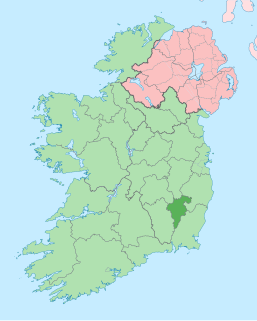 W
WThe Irish pork crisis of 2008 was a dioxin contamination incident in Ireland that led to an international recall of pork products from Ireland produced between September and early December of that year. It was disclosed in early December 2008 that contaminated animal feed supplied by one Irish manufacturer to thirty-seven beef farms and nine pig farms across Republic of Ireland, and eight beef farms and one dairy farm in Northern Ireland, had caused the contamination of pork with between 80 and 200 times the EU's recommended limit for dioxins and dioxin-like PCBs i.e. 0.2 ng/g TEQ fat. The Food Safety Authority of Ireland moved on 6 December to recall from the market all Irish pork products dating from 1 September 2008 to that date. The contaminated feed that was supplied to forty-five beef farms across the island was judged to have caused no significant public health risk, accordingly no recall of beef was ordered. Also affected was a dairy farm in Northern Ireland; some milk supplies were withdrawn from circulation.
 W
WThe 2008 Chinese milk scandal was a significant food safety incident in China. The scandal involved milk and infant formula along with other food materials and components being adulterated with melamine. The chemical was used to increase the nitrogen content of diluted milk, giving it the appearance of higher protein content in order to pass quality control testing. Of an estimated 294,000 victims, 6 babies died from kidney stones and other kidney damage and an estimated 54,000 were hospitalized.
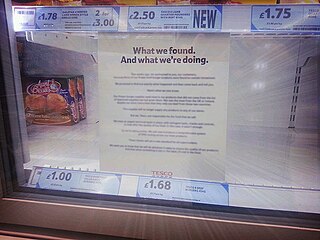 W
WThe 2013 horse meat scandal was a food industry scandal in parts of Europe in which foods advertised as containing beef were found to contain undeclared or improperly declared horse meat – as much as 100% of the meat content in some cases. A smaller number of products also contained other undeclared meats, such as pork. The issue came to light on 15 January 2013, when it was reported that horse DNA had been discovered in frozen beefburgers sold in several Irish and British supermarkets.
 W
WThe 2017 Fipronil eggs contamination is an incident in Europe and Asia involving the spread of fipronil insecticide which contaminated human consumed chicken eggs and egg products.
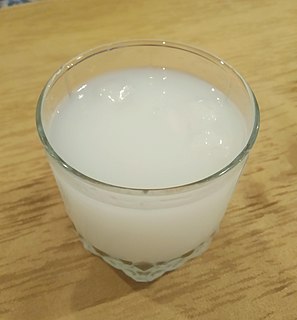 W
WArak or araq is a distilled Levantine spirit of the anise drinks family. It is translucent and unsweetened.
 W
WThe 1858 Bradford sweets poisoning was the arsenic poisoning of more than 200 people in Bradford, England, when sweets accidentally made with arsenic were sold from a market stall. Twenty-one victims died as a result. The event contributed to the passage of the Pharmacy Act 1868 in the United Kingdom and legislation regulating the adulteration of foodstuffs.
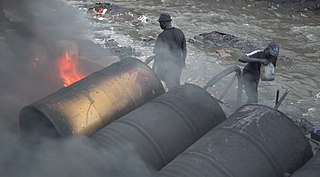 W
WChangaa or Chang'aa is a traditional home-brewed spirit, popular in Kenya. It is made by fermentation and distillation from grains like millet, maize and sorghum, and is very potent.
 W
WDenatured alcohol is ethanol that has additives to make it poisonous, bad-tasting, foul-smelling, or nauseating to discourage its recreational consumption. It is sometimes dyed so that it can be identified visually. Pyridine and methanol, each and together, make denatured alcohol poisonous; and denatonium makes it bitter.
 W
WDesi Daaru, also known as Desi Sharaab is a category of liquor made in the countryside of the Indian subcontinent, one of whose variants is tharra. It is traditionally prepared from a procedure that has been passed down for centuries. It is the primary and most popular alcoholic beverage in most of northern India particularly the rural parts. It is fermented and distilled from molasses, a by product of sugarcane. Desi liquor is a broad term and it can include both legally and illegally made local alcohol. The term desi daru usually refers to legal alcohol while other types of desi liquor may be categorised as moonshine alcohol. It has been consumed in India since ancient times and is known by different names in different parts of the country.
 W
WDiethylene glycol (DEG) is an organic compound with the formula (HOCH2CH2)2O. It is a colorless, practically odorless, poisonous, and hygroscopic liquid with a sweetish taste. It is a four carbon dimer of ethylene glycol. It is miscible in water, alcohol, ether, acetone, and ethylene glycol. DEG is a widely used solvent. It can be a contaminant in consumer products; this has resulted in numerous epidemics of poisoning since the early 20th century.
 W
WElixir sulfanilamide was an improperly prepared sulfonamide antibiotic that caused mass poisoning in the United States in 1937. It caused the deaths of more than 100 people. The public outcry caused by this incident and other similar disasters led to the passing of the 1938 Federal Food, Drug, and Cosmetic Act, which significantly increased the Food and Drug Administration's powers to regulate drugs.
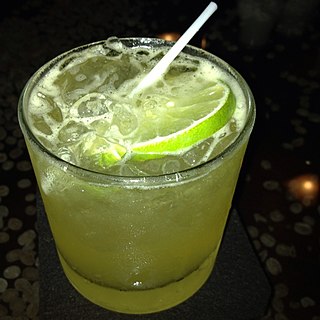 W
WGuaro is a liquor made in many places in Latin America. A clear liquid distilled from sugar cane juices, it has a slightly sweeter taste than comparable liquors. It is traditionally 60 proof or 30% alcohol, although recently 70 proof and 80 proof versions are produced. It is popular in Colombia, Costa Rica, Ecuador, El Salvador, Guatemala, Honduras, Nicaragua, and Panama, although in many places the word "guaro" can refer to almost any liquor.
 W
WThe 1971 Iraq poison grain disaster was a mass methylmercury poisoning incident that began in late 1971. Grain treated with a methylmercury fungicide and never intended for human consumption was imported into Iraq as seed grain from Mexico and the United States. Due to a number of factors, including foreign-language labelling and late distribution within the growing cycle, this toxic grain was consumed as food by Iraqi residents in rural areas. People suffered from paresthesia, ataxia and vision loss, symptoms similar to those seen when Minamata disease affected Japan. The recorded death toll was 459 people, but figures at least ten times greater have been suggested. The 1971 poisoning was the largest mercury poisoning disaster when it occurred, with cases peaking in January and February 1972 and stopping by the end of March.
 W
WJamaica ginger extract, known in the United States by the slang name Jake, was a late 19th-century patent medicine that provided a convenient way to obtain alcohol during the era of Prohibition, since it contained approximately 70% to 80% ethanol by weight. In the 1930s, a large number of users of Jamaica ginger were afflicted with a paralysis of the hands and feet that quickly became known as Jamaica ginger paralysis or jake paralysis.
 W
WLacing is the act of adding one or more substances to another. Some street drugs are commonly laced with other chemicals for various reasons, but it is most commonly done so as to bulk up the original product or to sell other, cheaper drugs in the place of something more expensive. Individuals sometimes lace their own drugs with another substance to combine or alter the physiological or psychoactive effects.
 W
WLotoko, also known by the slang term "pétrole", is a home-distilled alcoholic drink or "moonshine" in the Democratic Republic of the Congo.
 W
WAkpeteshie is the national spirit of Ghana, produced by distilling palm wine or sugar cane. In Nigeria it is known as Ògógóró (Ogog'), a Yoruba word, usually distilled locally from fermented Raffia palm tree juice, where it is known as the country's homebrew. Today, there is a misconception that Ogogoro can be pure ethanol, but traditionally, it had to come from the palm tree and then be distilled from this source.
 W
WOlive oil regulation and adulteration are complex issues overseen and studied by various governmental bodies, non-governmental organizations, and private researchers across the world.
 W
WIn 1984, 751 people suffered food poisoning in The Dalles, Oregon, US due to the deliberate contamination of salad bars at ten local restaurants with Salmonella. A group of prominent followers of Rajneesh led by Ma Anand Sheela had hoped to incapacitate the voting population of the city so that their own candidates would win the 1984 Wasco County elections. The incident was the first and is the single largest bioterrorist attack in United States history.
 W
WReagent testing is one of the processes used to identify substances contained within a pill, usually illicit substances. With the increased prevalence of drugs being available in their pure forms, the terms "drug checking" or "pill testing" may also be used, although these terms usually refer to testing with a wider variety of techniques covered by drug checking.
 W
WThe swill milk scandal was a major adulterated food scandal in New York in the 1850s. The New York Times reported an estimate that in one year 8,000 infants died from swill milk.
 W
WToxic oil syndrome (TOS) or simply toxic syndrome is a musculoskeletal disease. A 1981 outbreak in Spain which affected about 20 000 people, with over 300 dying within a few months and a few thousand remaining disabled, is thought to have been caused by contaminated colza (rapeseed) oil. It was unique because of its size, the novelty of the clinical condition, and the complexity of its aetiology. Its first appearance was as a lung disease, with unusual features, though the symptoms initially resembled a lung infection. The disease appeared to be restricted to certain geographical localities, and several members of a family could be affected, even while their neighbours had no symptoms. Following the acute phase, a range of other chronic symptoms was apparent.
 W
WWaragi is a generic term in Uganda for domestic distilled beverages. Waragi is also given different names, depending on region of origin, the distillation process, or both. Waragi is known as a form of homemade Gin. The term "Waragi" is synonymous with locally distilled gin in all parts of Uganda. However, Uganda Waragi is a particular brand of industrially distilled gin produced by East African Breweries Limited. Other brands of distilled gin which are done by individuals at small scale are also available, but they are also unique and different from each other. The most common are: 1. "Kasese-Kasese" which was originally distilled in the district of Kasese in western Uganda and sold all over the country; 2. "Lira-Lira" which first originated in Lira district in northern Uganda and sold all over the country as well. These two brands "waragi" have different tastes and scents from each other. The distillation process in both cases produce highly distilled gin at the level produced industrially.